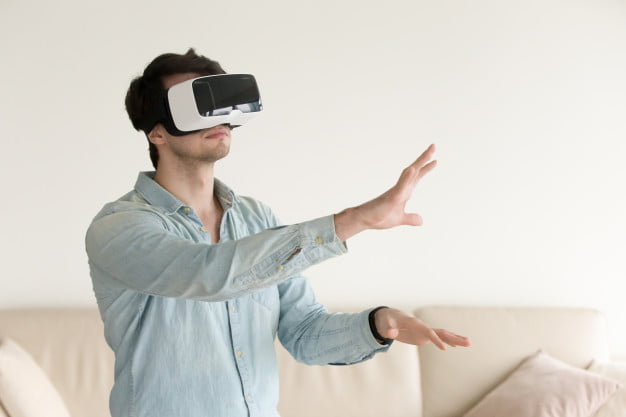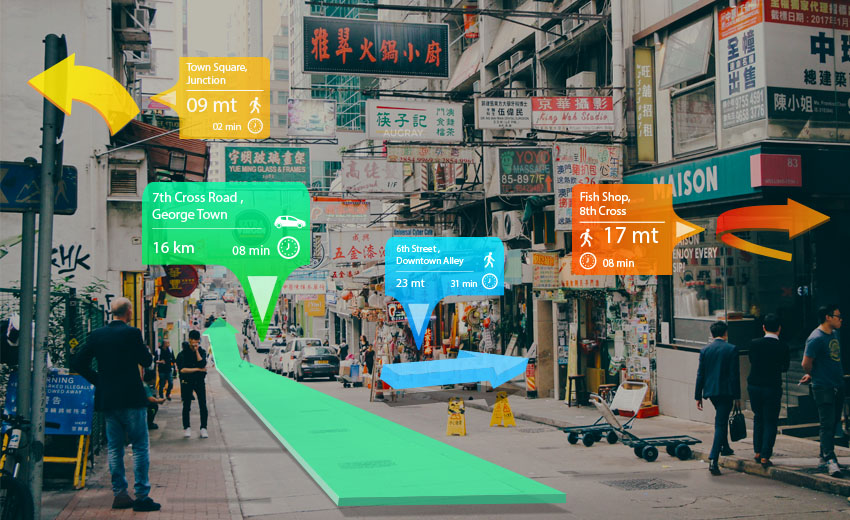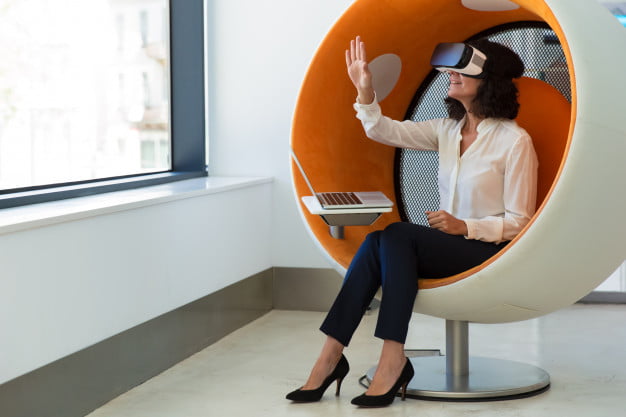By definition, augmented reality, or AR, is a digital technology, which alters a person’s perception of their physical surroundings when viewed through a particular device. Based on several studies and reports from Statista, the Augmented Reality (AR) market is predicted to grow from US $ 5.92 billion to US$ 198 billion by the year 2025. Considering the ongoing global crisis, Augmented Reality trends have materialized as a constructive tool for different businesses. It allows them to transform the way customers observe their surroundings.
In Tim Cook’sCook’s words, “Simply put, we believe augmented reality is going to change the way we use technology forever. We already see things that will transform the way you work, play, connect and learn.”
Let’s dig into how augmented reality could be the next big thing in the travel and tourism industry!
Importance of AR in Travel and Tourism Industry
With the power of enthralling human minds, AR is altering the game for marketers. The technology is breaching innovative doors for the travel industry to improve their customer experience. However, the travel and tourism domain has already shown significant transitions with Augmented Reality.
The travel and tourism business is a highly researched segment. Generally, customers in the travel industry always plan their journey, stay, or food places to explore extensive research. The pursuit for data and information does not come to a standstill for a customer even after arriving at their targeted travel destination. Furthermore, all this information is explored in a range of mobile devices. This is precisely where Augmented Reality makes a difference.
Read about AR in multiple industries here.
Examples of the AR being The Next Big Thing

1. Apple Map: “Flyover” Mode
The new ”Flyover” option in Apple enables iOS 11 users to explore cities in the 3D view. Navigating with this feature is a lot like watching a 360-degree video where one can change the point of view by walking around. The flyover mode integrates augmented reality with Apple Maps to enable users to walk through the city while at home.
2. App in the Air – Avis
Next on the list is App in the Air, a travel planning app to ease the quest to find the right flight. The App allows users to view a plane seat at its accurate scale, enabling them to make better booking decisions based on comfort. With an augmented view of a flight’s inside, travelers can directly compare their carry-on luggage to the airlines’ permitted baggage size.
3. Wikitude
Voted by the Augmented Planet Magazine as the best-augmented reality browser of 2010, Wikitude enables users to locate restaurants, stores, and other places nearby. Using location-based augmented reality, Wikitude recognizes interesting places around for travelers to visit. The only thing they ought to do is point the App in the desired direction.

The Future of Travel Industry
Here is a list of how augmented reality provides long-term values for both customers and the tourism industry alike.
1. Innovating Advertising and Marketing
According to Expedia studies, 78% of travelers reveal that the informative content from destinations or travel brands directly influences their decision-making process. Moreover, 46% show that ads with informative content are influential. There’sThere’s an appetite for mobile advertising with compelling content.
AR holds the potential of enabling travel companies to narrate their services more creatively. Virtual tours of hotel suites and other amenities with a single tap on mobile screens ease travelers’ research process and help them make better booking decisions.
2. Enhancing Travel Convenience with AR Apps

AR Travel Apps to Ensure No Tourist Is Lost: Finding your way in an unfamiliar town is challenging. AR turns navigation apps cooler with added digital elements like arrows and other valid information. By integrating phone cameras with Google Maps, AR can enhance a traveler’s exploration of a new town.
AR Cutting Down Language Barriers: It is pretty much unthinkable to travel to a foreign land without a translator. But with augmented reality, smartphone cameras can translate foreign languages for users.
AR Extending 24/7 Tour Guide: Finding a perfect store or restaurant is getting more straightforward than ever before. With Augmented Reality, smartphones are turning into little encyclopedias. Screening through hotel reviews or locating historic buildings has become more seamless and interactive with AR travel apps.
Read more about the rise of Augmented Reality here.
3. Creating Attractive Destinations
Teleporting seems possible with augmented reality. Enabling to view the evolution of landmarks from a time perspective, enjoy 3D models of places, and experience travel through time, AR allows theme parks and zoos to create extraordinary attractions. One of the most significant examples would be the LIVE Centre theme park, which leverages AR/VR to combine art, culture, architecture, design, and retail with projections, surround sound, and special effects.
To sum it up, Augmented reality and virtual reality are a significant addition to the travel industry. Just not the travelers, businesses associated with travel and tourism have also benefited from these mobile apps using AR technologies. Industries use AR to advertise by providing virtual tours of the destinations or hotels to let people visit more. AR-based apps have helped reduce costs and enhanced operational efficiency and customer experience.
In case you’re looking for travel software solutions using these innovative technologies or want to integrate AR into your existing solution, you must consult our experts, for they have both the creativity and passion for building innovative solutions for businesses.





